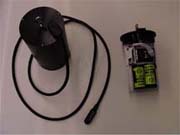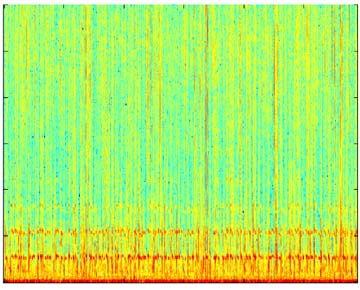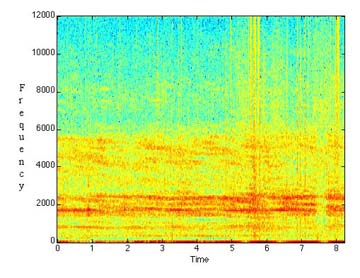|
David Mann
University of South Florida
College of Marine Science
140 7th Avenue South
St. Petersburg, FL 33701
727-553-1192
dmann@marine.usf.edu
Program Summary
Sound is an ideal way for animals to communicate in the ocean. Sound
attenuates little in the ocean, is directional, and is very useful where
there is no light. It is not surprising then that many fishes have evolved
the ability to produce sounds by drumming the swimbladder with specialized
muscles or bones. While many fishes are known to produce sound, most
have not been studied.
Identifying Sound Producing Fishes
One goal of my laboratory is to identify sounds produced by fishes and
to document the behaviors that accompany sound production. One species
that we are intensively studying, the Gulf toadfish (Opsanus beta),
produces a call that sounds like a fog horn known as the ‘boatwhistle’.
This call is used to attract females to nests that the male has prepared.
The toadfishes are a good example of how much basic information about
sounds has yet to be gathered. While there are 69 species of toadfishes,
the sounds of only six species have been recorded and analyzed.
 |
| Underwater
datalogger and housing used to record fish sounds. The assembled
device is shown on the left. The datlogger (in black) and batteries
in green are shown on the right. |
Ecology of Sound
Production
Since many fish sounds are associated with reproduction, they can be
used to measure the time and place of spawning. We are using passive
acoustics to identify spawning periodicity for several species in Sarasota
Bay and Charlotte Harbor in southwestern Florida. One thrust of these
studies is the development of instrumentation for passive acoustic detection
in the field. For example, we have programmed an advanced digital signal
processing datalogger to automatically detect and record toadfish calls.
Figure 1 shows the calls of the gulf toadfish produced over a one night
period (they appear as horizontal red bands on the graph). This type
of device will be useful for fisheries bioacoustics once measures of
sound production have been ground-truthed against data of interest to
fisheries managers, such as when and where fish spawn and the size of
spawning aggregations.
 |
| Figure
1. Spectrogram of a series of automatically-detected toadfish (Opsanus
beta) calls plotted one after another (the calls appear as the red
lines moving across the image). |
Effects
of Noise on Fishes
One final area of research that we are undertaking is to study the impacts
of noise on sound-producing fishes. Great emphasis has been recently
placed on understanding the impacts of anthropogenic noise from boats,
geologic exploration (from air guns), and scientific research on cetaceans
(whales and dolphins). Yet, very few studies have investigated the impact
of noise on fishes, especially sound-producing fishes. Figure 2 shows
a recording of the sound from an outboard boat in Charlotte Harbor,
FL. This sound includes the same frequencies as fish sounds. The range
over which sound-producing fishes could attract mates could be severely
limited by increased levels of background noise.
 |
| Figure 2.
Sounds produced by a small outboard boat recorded in Charlotte Harbor,
FL. Most of the sounds are between 100 and 2500 Hz, which are in
the same range as most fish sounds. |
Return to Top |Research
Programs
|